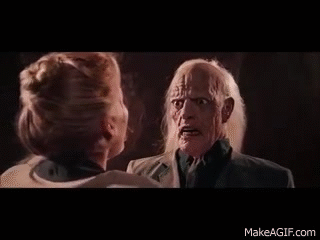
Eyewitness misidentification is nasty stuff. It's the leading cause of false convictions by far according to the Innocence Project. Of the 16 DNA exonerations in Virginia, eyewitness misidentification played a role in 13 of the bad convictions. It's a similar story all over the country. In fact, eyewitness misidentification played a role in more than 70% of convictions overturned through DNA testing nationwide. And it's fair to say that's only the tip of the iceberg since DNA evidence is only preserved in a tiny percentage of cases.
The good news is that over two hundred documented instances of innocent people being being falsely convicted and thrown behind bars for decades has led to outrage and reform. J/K. LOL. Nah for real, nothing has happened. The leading U.S. Supreme Court cases on eyewitness misidentification, Neil v. Biggers, is over 45 years old! This is an actual photo of the attorneys who argued Biggers:

fn1. These are not actually the attorneys who argued Biggers
The fact that Biggers is still used everyday to decide ID suppression issues is shameful. It came out before virtually all the psychological research on eyewitness ID. Research that has conclusively proven that Biggers factors like witness certainty, degree of attention, and opportunity to view are utter nonsense. Simply put, Biggers is as much of an embarrassment as the suits pictured above. What compounds the madness is that we know what goes into better ID procedures. Allow me to blow your mind. When a witness is shown a single person, it has a strong tendency to lead to bad IDs.

This simple idea has not only blown Keanu's mind, it's blown courts' minds all over the country. "Show up" IDs are routinely admitted in court. IDs that are made for the first time at preliminary hearing after a defendant is trotted out in an orange jumpsuit and shackles are routinely admitted. IDs made while a suspect is in handcuffs in front of a police car are routinely admitted. I shit you not.
I can't believe that I even have to say this, but "show up" ID procedures are garbage and lineups should be mandatory. The three main things that go into a non-suggestive lineup are 1. decent filler photos, 2. sequential display of the photos, and 3. a double blind lineup administration. None of this is controversial. The Virginia DCJS has a model policy including all of those simple steps. The Virginia Beach Police Department was ahead of the curve and was actually one of the first departments in the country with a written policy with all of those steps. The problem is that all of these model policies aren't worth the paper they're printed on if police officers don't have to follow them. There's no law in Virginia that requires officers follow their own policy. The not surprising result is that the police often ignore the policy. That means trash IDs get admitted in courtrooms every day and innocent people get steamrolled.
I would love if the U.S. Supreme Court tackled eyewitness ID and replaced Biggers with something that makes sense, but I fear this is what I would look like waiting for that to happen:

Instead, we need a law that gives model ID policies some teeth. There should be real consequences for violations. I would prefer a law automatically requiring evidentiary exclusion, but I'll be realistic. Let's steal North Carolina's lineup law. G.S. 15A-284.5 mandates double blind administration, sequential lineups, and a host of other best practices of ID procedure. If the police blow off the requirements, there is the novel concept of consequences:
(1) Failure to comply with any of the requirements of this section shall be considered by the court in adjudicating motions to suppress eyewitness identification.
(2) Failure to comply with any of the requirements of this section shall be admissible in support of claims of eyewitness misidentification, as long as such evidence is otherwise admissible.
(3) When evidence of compliance or noncompliance with the requirements of this section has been presented at trial, the jury shall be instructed that it may consider credible evidence of compliance or noncompliance to determine the reliability of eyewitness identifications.
That's a pretty good start. If officers are getting raked over the coals at suppression hearings and trials, there's a pretty good chance that they'll change how they conduct IDs. Would it be messy for a little while and lead to a lot of belly aching about inconvenience? Probably. That's a small price to pay to promote reliable evidence coming before judges and juries and innocent people not going to prison.
For More Information, Visit Our Website.
